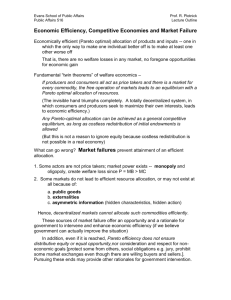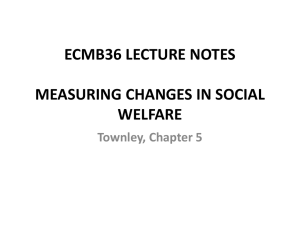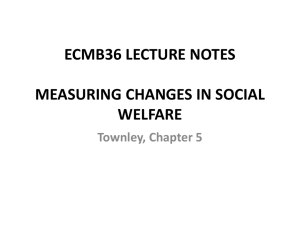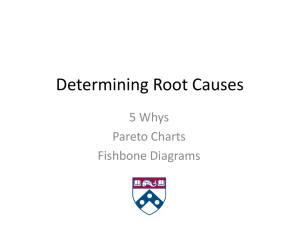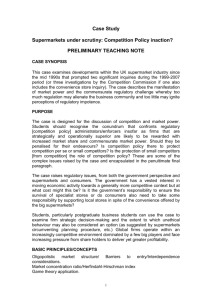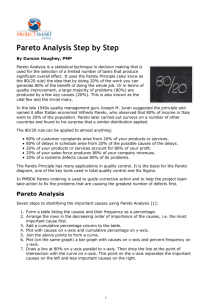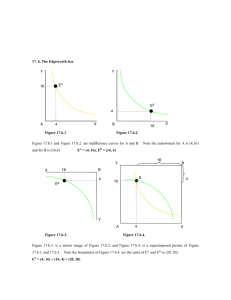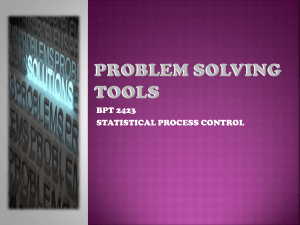Topic 5. Overcoming the limitations of the Pareto principle
advertisement
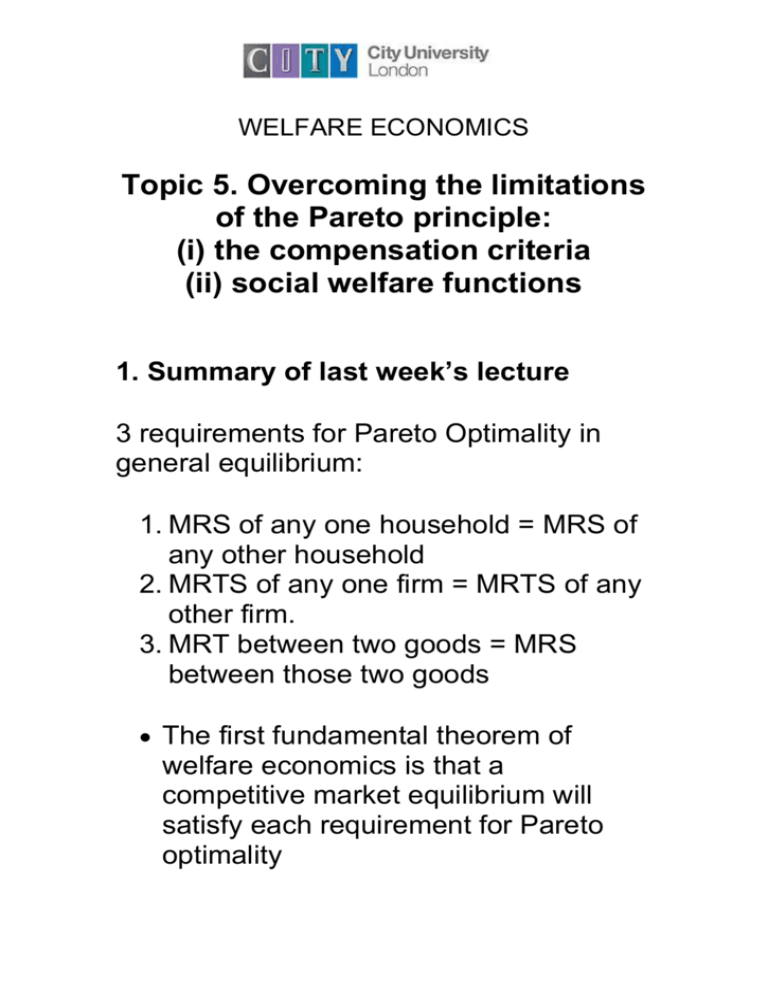
WELFARE ECONOMICS Topic 5. Overcoming the limitations of the Pareto principle: (i) the compensation criteria (ii) social welfare functions 1. Summary of last week’s lecture 3 requirements for Pareto Optimality in general equilibrium: 1. MRS of any one household = MRS of any other household 2. MRTS of any one firm = MRTS of any other firm. 3. MRT between two goods = MRS between those two goods The first fundamental theorem of welfare economics is that a competitive market equilibrium will satisfy each requirement for Pareto optimality Good Y Slope = MRT Slope = PX/PY Good X MRT = MRS 2. What conclusions can be drawn? Competitive markets generate an equilibrium which is optimal in the Pareto sense i.e. it is impossible to make a change (in the mix of goods produced, the inputs used to produce them, or their allocation between consumers) without making at least one person worse off. But may not be optimal in any other sense e.g. may be very unfair. The outcome depends entirely on the initial distribution of endowments There are an infinitely large number of potential equilibria that satisfy each of the 3 criteria. Each is Pareto-non-comparable. Choosing between them requires a further criterion i.e. to invoke a value judgement stronger than Pareto. 3. The Pareto principle: limitations The Pareto principle… is neutral to distributional concerns is unable to rank every Pareto optimal allocation superior to every non-optimal allocation is unable to rank different Pareto optimal allocations relative to one another. → Cannot rank states that involve a tradeoff in utility between households. → a ‘stronger’ value judgement is required to achieve a complete social ordering of states. 4. Deriving the utility possibility frontier and the grand utility possibility frontier. [diagrams to be drawn on the whiteboard] Again, to reiterate the limitations of Pareto, use the UPF to demonstrate that: not all Pareto non-optimal points can be ranked against all Pareto optimal points. We cannot rank the Pareto optimal points. 5. The compensation criterion → is a shift from state x to state y (a ‘measure’) an improvement? → extend the notion of a Pareto improvement to create a potential Pareto Improvement. Kaldor: If those who gain from the measure can compensate those who lose from the measure, such that the losers are no worse off and the gainers better off. Hicks: If those who lose from the measure are not able to bribe the gainers not to take the measure. 6. Critiques of the compensation criterion. (a) Payments not actually carried out, so the Pareto improvement remains potential (not actual). (b) The Scitovsky paradox. The criterion may lead to intransitivity: a measure as well the reversion of the measure may be recommended under the Kaldor Hicks criterion. U1 c a d b UPF’ UPF U2 7. Social welfare functions: choosing the ‘optimum optimorum’ SWF: a function of the utility levels f(U1, U2) of all (both) households such that a higher value of the function is preferred to a lower one. [‘Bergsonion’ or ‘BergsonSamuelson’] Bergsonian SWF a general expression. Simply says social welfare = ‘some function of’ individual utilities. General properties: welfarism; welfare increasing in each individual’s utility; negativelysloped; convexity; anonymity. slope = marginal rate of social substitution (MRSS) U1 W3 W2 W1 Grand UPF U2 8. Specific functional forms (i) Simple utilitarian SWF: equalweighted sum of utilities. (ii) Generalised utilitarian: weighted sum of utilities. i.e. society ‘should’ be prepared to prepared to accept a decrease in the utility of the poor as long as there is a much larger increase in the utility of the rich. (iii) Rawlsian (maximin) The welfare of society depends only on the utility of the poorest (worst-off) household. 9. Requirements: measurability and comparability. Where do SWF ‘come from’? What limits our ability to establish a SWF? Measurability: refers to the sense in which the real numbers attached to a household’s utility levels are meaningful (convey information) Comparability: refers to the sense in which the real numbers attached to different households’ utility levels can be meaningfully compared. Measurability possibilities: Absolute scale, cardinal scale, ratio scale, ordinal scale. “The more information that is available (or the higher the degree of measurability and comparability the planner is faced with…) the larger the set of SWOs to choose from. The choice of a specific form for the SWO then involves a further ethical judgement about how to aggregate the individual utilities.” [Boadway and Bruce, p. 169]


